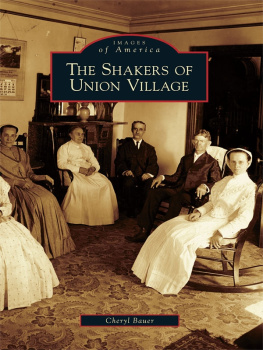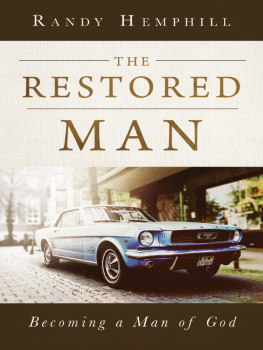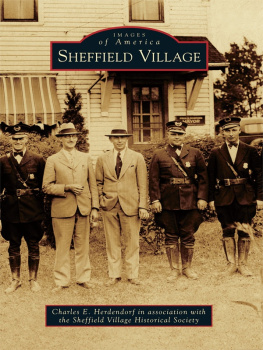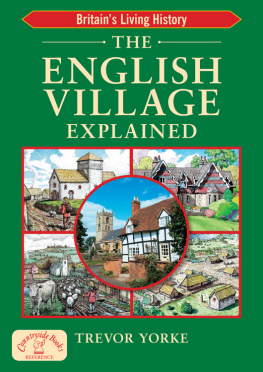RESTORING
SHAKERTOWN

RESTORING
SHAKERTOWN
The Struggle to Save the
Historic Shaker Village
of Pleasant Hill

THOMAS PARRISH

FOREWORD BY
THOMAS D. CLARK

AFTERWORD BY AL SMITH

Publication of this volume was made possible in part
by a grant from the National Endowment for the Humanities.
Copyright 2005 by Thomas Parrish
Published by The University Press of Kentucky Scholarly publisher for the Commonwealth, serving Bellarmine University, Berea College, Centre College of Kentucky, Eastern Kentucky University, The Filson Historical Society, Georgetown College, Kentucky Historical Society, Kentucky State University, Morehead State University, Murray State University, Northern Kentucky University, Transylvania University, University of Kentucky, University of Louisville, and Western Kentucky University. All rights reserved.
Editorial and Sales Offices: The University Press of Kentucky
663 South Limestone Street, Lexington, Kentucky 405084008
www.kentuckypress.com
09 08 07 06 05 5 4 3 2 1
Library of Congress Cataloging-in-Publication Data
Parrish, Thomas (Thomas D.)
Restoring Shakertown : the struggle to save the historic Shaker village of Pleasant Hill / Thomas Parrish ; foreword by Thomas D. Clark ; afterword by Al Smith.
p. cm.
Includes bibliographical references and index.
ISBN 0-8131-2364-X (hardcover : alk. paper)
1. Historic buildingsConservation and restorationKentuckyPleasant Hill. 2. Historic preservationKentuckyPleasant Hill. 3. Pleasant Hill (Ky.)Buildings, structures, etc. 4. ShakersKentuckyPleasant HillHistory. 5. Pleasant Hill (Ky.)History. I. Title.
F459.P555P37 2005
363.6909769485dc22 2005018027
This book is printed on acid-free recycled paper meeting the requirements of the American National Standard for Permanence in Paper for Printed Library Materials.

Manufactured in the United States of America.

| Member of the Association of
American University Presses |
Contents
Thomas D. Clark
Al Smith
Foreword
Rebirth of a Historic Community
THOMAS D. CLARK

Tucked away safely atop a shoulder of the Kentucky River palisades, Shakertown at Pleasant Hill in Mercer County, Kentucky, near Lexington, is one of the best preserved and managed of the communal sites in North America. It is a national treasuretwenty-nine hundred acres of beautiful land and restored buildings that was once a thriving village created in the nineteenth century by believers of a curious religious sect committed to the practice of communal, but celibate, living. This book tells how the village was saved from the ravages of time and neglect and became an impressive landmark in the historic preservation movement of the second half of the twentieth century.
But first, a word about the origin of the Pleasant Hill Shaker community. With more than a dash of folk wisdom and foresight, northern emissaries of the socio-religious mystic Mother Ann Lee came to Kentucky in search of converts two hundred years ago and located a modest beginning site on the winding Shawnee Run Creek, a lateral of the Kentucky River. By 1808 the village was moved up ridge to a knoll to be called Pleasant Hill.
In a frenetic moment when Kentucky was aglow with religious revivalistic fervor, wandering Shaker proselytizers found it relatively easy to recruit members for their Society of Believers. At Pleasant Hill they planted a self-sustaining religio-agrarian foothold. Well outside the pale of the religious fundamentalists, the discipline and order of Mother Ann was based upon a strong element of Quakerism, the Established Church of her native England, and a generous outpouring of mysticism.
The order grew in numbers, to a zenith of five hundred in 1830, the third largest of the nineteen Shaker communities then in America. There came experienced farmers, herdsmen, craftsmen, food processors, and skilled marketers. Standing above the rank and file of converts was the gifted Virginia youth Micajah Burnett, a self-taught architect and builder who planned and oversaw the construction of a cluster of remarkable buildings of an adaptive Georgian style. No Kentucky builder ever used native Kentucky materials to so graceful a purpose. Burnetts remains lie in an unmarked grave of the village where he labored, but his genius is remembered in the high degree of perpetuity he assured the structures at Pleasant Hill.
Their craftsmen unable to compete against an expanding commercial-industrial economy, their beliefs undermined by a waning of religious enthusiasm and a weakening of their faith in celibacy as the nineteenth century moved forward, the Shakers slowly succumbed to the blight of worldliness in changing times. With the death of the last surviving Shaker, Sister Mary Settles, in 1923, the village was returned to the world.
In recounting how Shakertown was reassembled as an outdoor museum in the second half of the last century, the largest restored Shaker community in the country, Thomas Parrish has presented a fascinating chronicle of the villages evolving fortunes. He deals effectively with the challenges of financing, of finding the best preservation experts, and of following their advice to achieve the highest standards of authenticity possible. In terms of management, his story credits, properly, the enormous contribution of Earl D. Wallace, the longtime chairman of the restoration effort; but he also includes the criticisms of those who objected to what they saw as Wallaces attempts in the last years of his leadership to move the mission from historic preservation to conferencingprimarily annual meetings on socioeconomic issues conducted by the Shakertown Roundtablewhile ignoring suggestions for further work on the infrastructure at Shakertown. Toward the conclusion of this story, it will be apparent that Wallaces successors as chairmen redirected the program, and substantial fund-raising, toward the preservation mission. But adherence to preservation as a central mission, however admirable, has not exempted Shakertown from a decline in visitor attendance that has been noted at historic sites all over the United States in the first decade of a new century. I would suggest that Shakertown trustees may want to revisit mission issues yet again.
Personally, I saw Shakertown for the first time in mid-summer, 1929. It stood as a proud but sadly deteriorating roadside Kentucky settlement, and seemed to be growing shabbier daily. Over the next three decades restoration was only a vapid dream of a few concerned individuals. When Wallace came along, as a retired oil executive turned Wall Street financier, he was at the right juncture of life and profession to give full attention to the restoration challenge that Thomas Parrish describes. He was also so newly pastured from New York that the passion of financial pursuits was still upon him. He exulted in the quest for money to make the restoration a reality.
Next page














